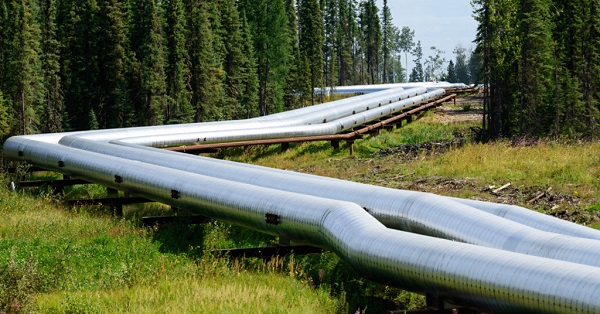Energy
New documentary exposing climate alarmism is the latest victim of Big Tech censorship

From LifeSiteNews
Vimeo temporarily removed ‘Climate: The Movie (The Cold Truth)’ and YouTube slapped a ‘context’ warning on it that is still in place.
A documentary that exposes climate alarmism as a “scam” to increase globalist power and profit was the latest victim of Big Tech censorship, with Vimeo temporarily removing it and YouTube slapping a “context” warning on it.
As LifeSiteNews reported, Climate: The Movie (The Cold Truth) exposes the financial interest many professionals have in stoking fears about climate change. There is even a push to criminalize dissent about the topic. Adherents to the official narrative about COVID-19 advocated similarly draconian censorship of skeptics. One such COVID narrative skeptic is Dr. William Makis, a Canadian physician with expertise in radiology, oncology, and immunology who used his Substack to highlight the censorship of Climate: The Movie (The Cold Truth) by posting an Epoch Times article about it.
After the movie’s release and calls to censor it, “Vimeo removed the video from its platform on March 24, citing a ‘violation of Vimeo’s Terms of Service and/or Guidelines.’”
“About 12 hours after I reached out, it went back up again,” the film’s creator, Martin Durkin, told The Epoch Times. “But we don’t know why. I presume that some ‘greens’ complained about it and that they automatically took it down. Fair dues to Vimeo that they put it back up, though, that was good.”
The outlet continued:
On March 22, Food Lies, which has 44,000 subscribers, reported that when they first shared the movie on their channel, YouTube “immediately” removed it, and Food Lies had to seek special permission to repost.
When the report was granted, YouTube added the following contextual warming, “Climate change refers to long-term shifts in temperatures and weather patterns. Human activities have been the main driver of climate change, primarily due to the burning of fossil fuels like coal, oil, and gas,” and included a link to the United Nations’ “What is Climate Change?” website.
The “context” warning and link to the U.N. website also appear on the version posted by the “Climate The Movie” account, which has been viewed 98,000 times. YouTube similarly places “context” on medically accurate pro-life videos. During the height of coronavirus panic, it censored videos critical of lockdowns and mRNA vaccines.
X (formerly Twitter) has not censored the Climate: The Movie (The Cold Truth), in keeping with the free speech ideals its owner Elon Musk has repeatedly articulated.
Climate the Movie: The Cold Truth
The final nail in the coffin for the "human-induced climate change" scam. An absolute MUST-WATCH!
Directed by Martin Durkin (@Martin_Durkin), director of 2007's 'The Great Global Warming Swindle'. Produced by Tom Nelson (@TomANelson).
Please… pic.twitter.com/bkCrGZhIlt
— Wide Awake Media (@wideawake_media) March 20, 2024
Dan McTeague
Will this deal actually build a pipeline in Canada?

By Dan McTeague
Will Carney’s new pipeline deal actually help get a pipeline built in Canada? As we said before, the devil is in the details.
While the establishment and mainstream media cheer on the new pipeline agreement, there are specific details you need to be aware of.
Dan McTeague explains in his latest video.
Energy
Canada following Europe’s stumble by ignoring energy reality

Family in Spain eating by candlelight during a blackout, April 2025
From Resource Works
Canada’s own 2024 grid scare proves we’re on the same path unless we change course.
Europe’s green-energy unraveling is no longer a distant cautionary tale. It’s a mirror — and Canada is already seeing the first cracks.
A new Wall Street Journal investigation lays out the European story in stark detail: a continent that slashed emissions faster than anyone else, only to discover that doing so by tearing down firm power before its replacement existed comes with brutal consequences — collapsing industry, sky-high electricity prices, political fragmentation, and a public increasingly unwilling to subsidize wishful thinking.
The tragedy isn’t that Europe tried to decarbonize quickly.
The tragedy is how they did it: by insisting on an “or” transition — renewables or fossil fuels — instead of what every energy-literate nation outside Europe pursued: renewables and fossil fuels, working together while the system evolves.
And here’s the uncomfortable truth:
Canada has already had its first European-style crisis. It happened in January 2024.
Canada’s early warning: the January 2024 electricity crunch
Most people have already forgotten it, because our political class desperately wanted you to. But in January 2024, Western Canada came within a whisker of a full-blown energy security breakdown. Alberta, Saskatchewan, and B.C. were stretched to their limit. The grid was under cascading stress. Contingency plans were activated. Alberta came terrifyingly close to rolling blackouts.
It wasn’t caused by climate change. It wasn’t caused by a mysterious cyberattack.
It was caused by the same structural brittleness now crippling Europe:
- Insufficient firm power, after years of political messaging that we could “electrify everything” without adding real generating capacity.
- Overreliance on intermittent sources not backed by storage or gas.
- A planning system that punted risk into the future, betting the grid could be stretched indefinitely.
The January 2024 event was not a blip. It was a preview.
Our European moment in miniature.
But instead of treating it as the national wake-up call it should have been, B.C. did something telling — and deeply damaging.
The B.C. government’s response: attack the messenger
Just a couple of years ago, an economist publicly warned about the economic price of emerging system vulnerabilities due to a groaning stack of “clean economy” policies.
The B.C. government didn’t respond with data, evidence, or even curiosity. Instead, a cabinet minister used the safety of legislative privilege — that gold-plated shield against accountability — to launch nasty personal attacks on the economist who raised the concerns, which themselves had originated in the government’s own analysis.
No engagement.
No counter-analysis.
No willingness to consider the system risks.
Just slurs — the very definition of anti-intellectual governance.
It was a moment that told the whole story:
Too many policymakers in this province believe that energy systems obey politics, not physics.
Physics always gets the last word.
Europe shows us what political denial turns into
The WSJ reporting couldn’t be clearer about the consequences of that denial:
- Germany: highest domestic electricity prices in the developed world.
- U.K.: highest industrial electricity rates among major economies.
- Industrial flight: chemical plants closing, data centres frozen, major players hinting at exiting Europe entirely.
- Grid instability: wind farms paid tens of millions not to generate because the grid can’t handle it.
- Public revolt: rising support for parties rejecting the entire green-transition agenda.
- Policy whiplash: governments rushing to build gas plants they swore they’d never need.
Europe is now an object lesson in how good intentions, executed poorly, can produce the exact opposite of what was promised: higher prices, higher volatility, declining competitiveness, and a public ready to abandon climate policy altogether.
This is precisely what January 2024 warned us about — but on a continental scale.
The system cost we keep pretending doesn’t exist
Every serious energy expert knows the truth Europe is now living: intermittent renewables require massive amounts of redundant capacity, storage, and backup generation. That’s why the U.K. now needs 120 gigawatts of capacity to serve a demand previously met with 60–70 gigawatts, even though electricity use hasn’t meaningfully grown.
This is the math policymakers prefer not to show the public.
And it’s why B.C.’s refusal to have an honest conversation about firm power is so dangerous.
If we electrify everything without ensuring affordable and abundant natural gas generation, we’re not building a green future.
We’re building Europe, 10 years early.
The lesson for Canada — especially for B.C.
Here is what Europe and January 2024 together say, in one clear voice:
1. There is no energy transition without firm power.
Renewables are part of the system, but they don’t run the system. Natural gas does. Hydro does. Nuclear does. Pretending otherwise is how you end up with rolling blackouts.
2. Political denial makes crises worse.
When ministers attack economists instead of answering them, it signals that ideology is running the show. Europe learned the cost of that. We will too, unless we change course.
3. Affordability is the foundation of public consent.
Europe lost the room. Once people see their bills double while factories close, the climate agenda becomes politically radioactive.
4. B.C. has an advantage Europe would kill for.
Europe dreams of having an abundant, local, low-carbon firm-power fuel like northeastern B.C.’s natural gas. We treat it like a political liability. That’s not strategy. It’s negligence.
5. The transition will fail if we don’t treat electricity like the national security asset it is.
Without energy, there is no industry.
Without industry, there is no prosperity.
Without prosperity, there is no climate policy that survives the next election cycle.
What we need now
Canada must embrace an “and” strategy:
Renewables and natural gas. Electrification and realism. Climate ambition and economic competitiveness.
January 2024 showed us the future in a flash. Europe shows us the end state if we keep ignoring the warning.
We can still choose something better. But only if we stop pretending that energy systems bend to political narratives — and start treating them with the seriousness they demand.
Resource Works News
-

 Business2 days ago
Business2 days agoRecent price declines don’t solve Toronto’s housing affordability crisis
-

 MAiD16 hours ago
MAiD16 hours agoFrom Exception to Routine. Why Canada’s State-Assisted Suicide Regime Demands a Human-Rights Review
-

 MAiD2 days ago
MAiD2 days agoHealth Canada report finds euthanasia now accounts for over 5% of deaths nationwide
-

 Daily Caller2 days ago
Daily Caller2 days agoTech Mogul Gives $6 Billion To 25 Million Kids To Boost Trump Investment Accounts
-

 Automotive1 day ago
Automotive1 day agoPower Struggle: Governments start quietly backing away from EV mandates
-

 Energy2 days ago
Energy2 days agoUnceded is uncertain
-

 Business14 hours ago
Business14 hours agoCarney government should privatize airports—then open airline industry to competition
-

 Business1 day ago
Business1 day agoNew Chevy ad celebrates marriage, raising children





